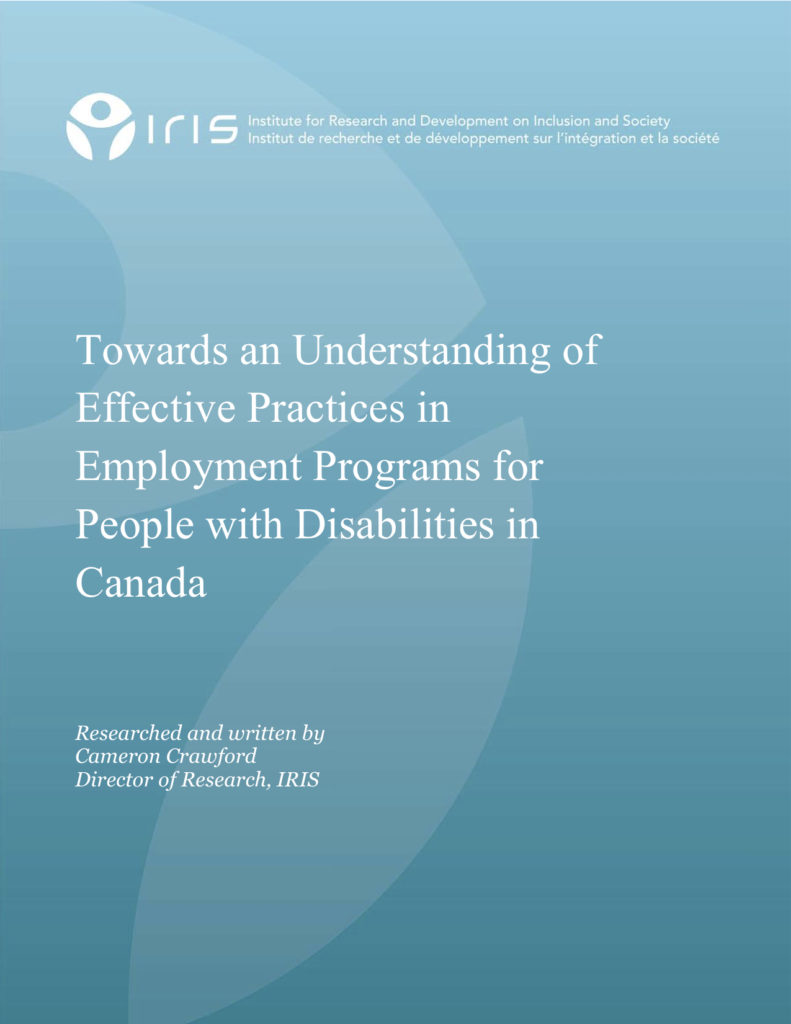
Under the Labour Market Agreements for Persons with Disabilities (LMAPDs), the federal government continues to share with the provinces the cost of programs that seek to improve the employment prospects of people with disabilities. While there have been improvements in the employment sector since the early 2000s, there is still a long way to go before the employment situation of people with disabilities looks more like that of individuals without disabilities.
Governments have to prioritize how best to rise to this challenge with limited resources in the context of fiscal restraint. And the LMAPDs are coming up for renewal. So, what’s working? What kinds of initiatives seem to be doing an effective job at getting people with disabilities into and keeping them in employment?
A recent IRIS report looks at this question. Entitled, Towards an understanding of effective practices in employment programs for people with disabilities in Canada, the report provides a review of the research literature, as well as key findings from interviews with government officials responsible for employment-related programming in every province and territory.
In general, the research found that key ingredients to effective programming are individualized, holistic, long-range planning, placement and follow-up services, together with measures to ensure that people with disabilities have the financial, human, technological and other supports needed to succeed in post-secondary education and on the job.
